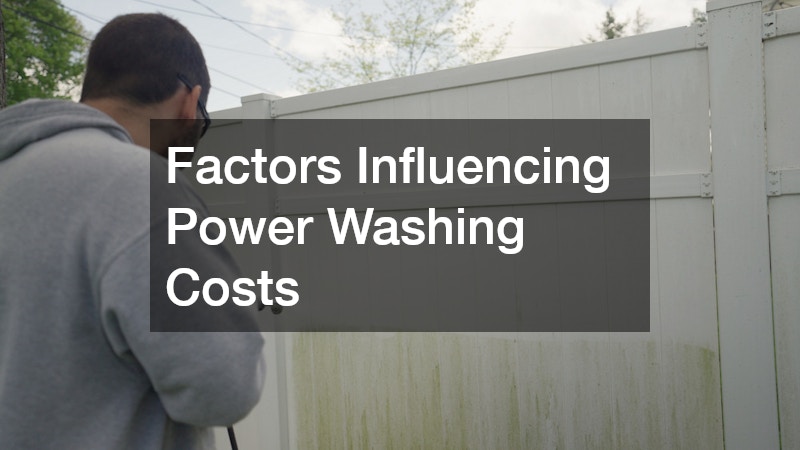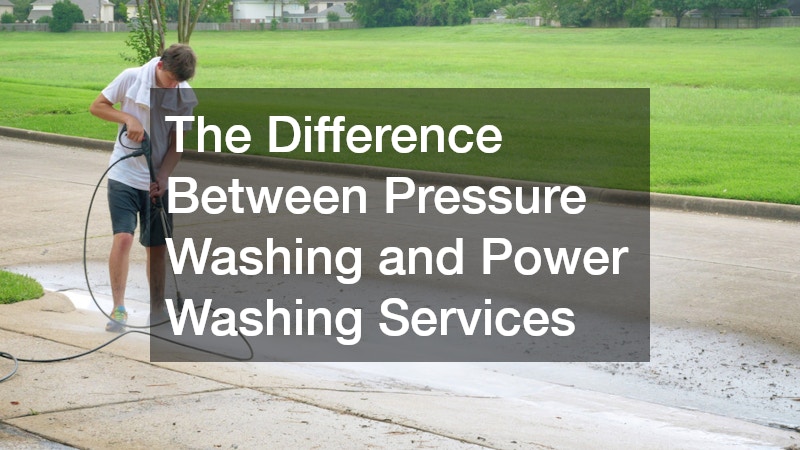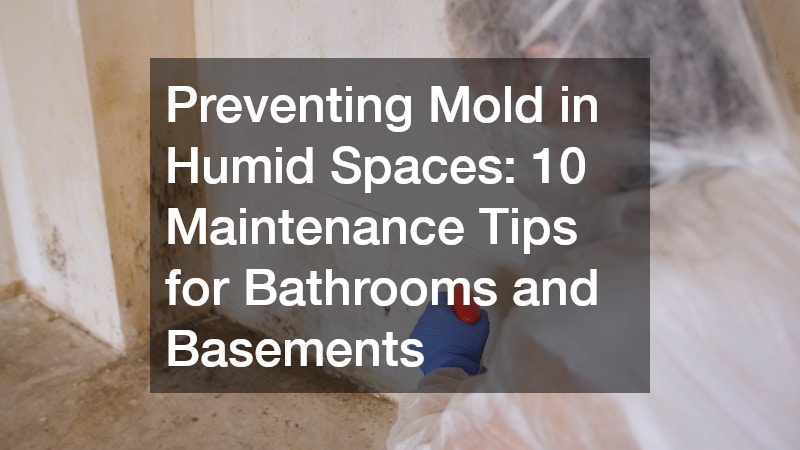Understanding the distinction between pressure washing and power washing services is crucial for choosing the right cleaning method for your surfaces. Both techniques are popular for cleaning exteriors, but they have different applications and benefits. Whether you’re a homeowner looking to spruce up the exterior of your house or a business owner wanting to maintain a clean facade, knowing the differences will help you make the best decision for your needs.
The Primary Difference Between Pressure Washing and Power Washing
Definition of Pressure Washing
Pressure washing uses high-pressure water to remove dirt, grime, and mildew from surfaces. It relies on the force of water pressure without additional heat. This method is particularly effective for surfaces that need a gentle yet efficient cleaning process, ensuring no damage occurs due to excessive force or temperature.
One of the main advantages is its versatility, as it can be used on various surfaces, including fragile materials. Pressure washing is an environmentally friendly option, as it typically doesn’t require chemicals or detergents to achieve a clean surface. The technique efficiently breaks up dirt with purely the force of water pressure, making it a sustainable and reliable cleaning solution.
For residential properties, pressure washing can tackle everything from sidewalks and driveways to patios and fences. Because it doesn’t utilize hot water, pressure washing is safe for sensitive surfaces, maintaining the integrity of materials like wood and vinyl. Quality pressure washing services also adjust the pressure levels to suit different surfaces, showcasing adaptability and safety in cleaning techniques.
Definition of Power Washing
Power washing is similar to pressure washing but includes the use of heated water. The combination of high pressure and heat makes it ideal for tougher stains. This method is especially advantageous when dealing with substances such as oil and salt, which dissolve more effectively when applied with heated water.
The increased temperature provided by power washing also helps in sanitization and the eradication of bacteria and mold. It’s commonly utilized for industrial cleaning tasks as well as hard surfaces like concrete and brick. With additional heat, power washing can cut through and clean deeply embedded grime faster than pressure washing alone can.
While power washing is extremely effective, it is generally recommended for more resilient and durable surfaces. Its forceful nature might not be suitable for surfaces like paint or softwood, which could sustain damage. Nonetheless, in scenarios requiring robust cleaning power, especially in commercial settings, power washing emerges as the superior choice.
Choosing Pressure Washing Over Power Washing
Suitable Surfaces for Pressure Washing
Pressure washing is ideal for cleaning softer surfaces that might be damaged by heat, such as wood decks or vinyl siding. Its customizable pressure settings mean it can provide a thorough clean without harming delicate surfaces. This adaptability ensures that various materials retain their integrity while receiving a refresh from layers of accumulated dirt.
For homeowners looking to maintain their property’s aesthetics, pressure washing offers a safe solution to clean gutters, sidewalks, and roofs. Utilized effectively, pressure washing can enhance curb appeal without the worry of damage to the structure itself. Additionally, a breakdown of organic materials such as algae and mold can be achieved efficiently with just the right pressure.
Suitable Surfaces for Power Washing
Power washing is best for hard, durable surfaces that can withstand both high pressure and heat, such as concrete driveways or patios. The ability to handle tougher materials means that power washing can quickly clear large areas of stubborn grime and dirt. This makes it an ideal technique for homeowners or businesses with extensive hardscape features.
This cleaning method is especially beneficial for cleaning areas exposed to motor oils, salts, or other challenging stains that might adhere tightly to surfaces. The added heat components make these elements more soluble, allowing for a quicker and more effective clean. Businesses especially benefit from power washing due to its efficiency and effectiveness at cleaning large surfaces in a short amount of time.
Cost Implications of Pressure Washing vs. Power Washing
Factors Influencing Pressure Washing Costs
Factors such as the size of the area, accessibility, and type of surface can affect the cost of pressure washing services. Smaller areas and surfaces that are easy to access typically incur lower costs due to reduced time and resource investments. Meanwhile, intricate surfaces requiring special attention might require additional labor, influencing the price.
Another crucial factor affecting cost involves varying surface types and their specific cleaning requirements. For example, using pressure washing on materials like wood or vinyl might necessitate extra caution, impacting the pricing structure. The more labor-intensive the cleaning process, the more likely costs will increase.
Factors Influencing Power Washing Costs
The use of additional heat in power washing often results in higher costs. The extent of the cleaning required and the surface material also play roles. Heated water requires more energy, thereby raising the overall operational costs associated with power washing, especially on larger projects.
Power washing costs might be higher for industrial applications, where expansive surfaces necessitate prolonged cleaning times. The complexity of the cleaning task, such as sanitizing an area prone to contamination, might require specialized equipment or detergents, thereby increasing expenses. Businesses must evaluate the necessity of such thorough cleaning against the associated costs.
Both pressure washing and power washing offer effective solutions for exterior cleaning, but their differences should guide your choice based on the surface type, cleaning requirements, and budget. By understanding these distinctions, you can make an informed decision when hiring a professional cleaning service. Ensuring a match between technique and application can result in both immediate aesthetic improvements and prolonged surface durability, proving that a thoughtful choice in washing method is essential.



